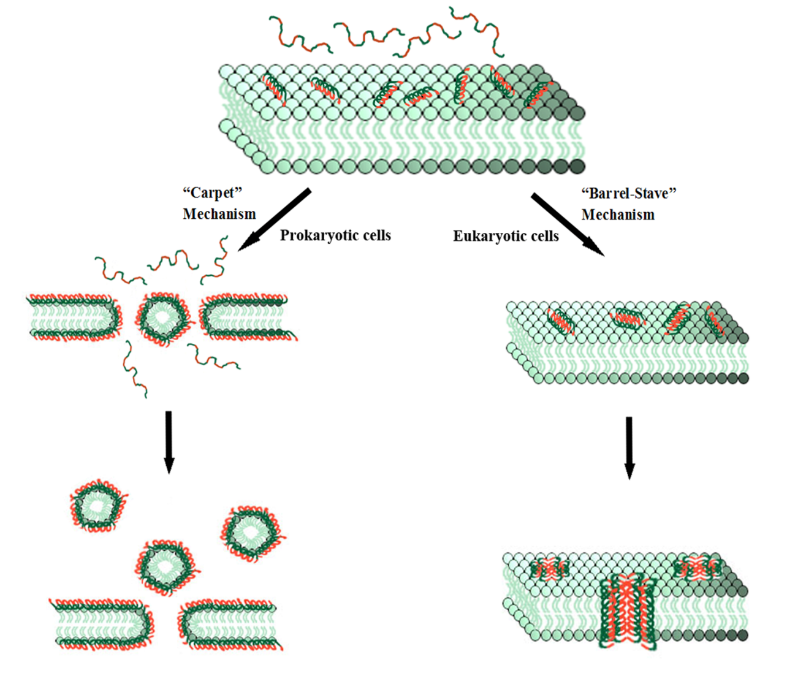Membrane differentiation mechanism
➣ Under the action of electrostatic attraction, the positive polypeptide diffuses directly to the surface of bacteria and passes through the cell walls of gram-positive and negative bacteria.
➣ Under the combined action of electrostatic attraction and transmembrane negative potential of bacterial cell membrane, peptides are attracted by the cell membrane and cover the surface of bacterial cell membrane. During this process, peptides are induced to form amphipathic α-helical structure by the hydrophobic environment of bacterial cell membranes.
➣ Subsequently, the hydrophobic groups on the hydrophobic surface of the peptide interact with the fatty acid hydrophobic components of the cell membrane phospholipids, causing the peptide to flip into the hydrophobic core of the cell membrane. A large number of peptide molecules undergo flipping, thereby disrupting the surface tension of the lipid bilayer and disrupting membrane stability.
➣ At critical peptide concentrations, the cell plasma membrane will leak or collapse, ultimately leading to bacterial death.
Mechanism of cell membrane differentiation


